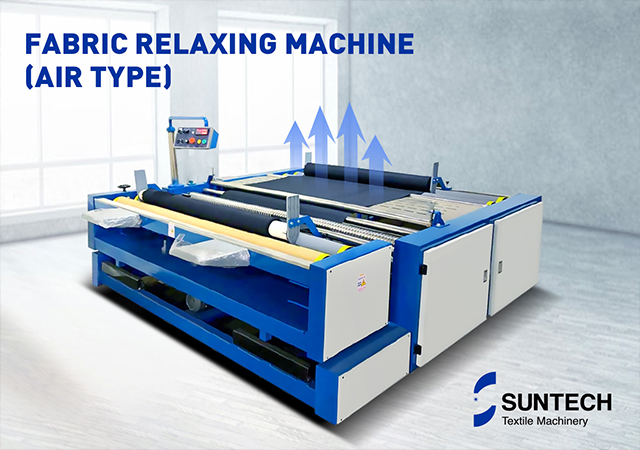Fabric shrinkage, a universal phenomenon within the textile industry, casts its impact on manufacturers and consumers alike. From beloved sweaters to everyday tees, comprehending the causes and consequences of fabric shrinkage is pivotal for stakeholders in textile production and usage.
Fabric shrinkage emerges from a complex interplay of factors, encompassing fiber type, yarn structure, and finishing techniques. These elements collectively shape the fabric's propensity to shrink, making it imperative to fathom these intricacies to anticipate and manage shrinkage effectively.
The Underlying Factors
- Fiber Type: A pivotal factor in fabric shrinkage, the type of fiber at the fabric's core dictates its susceptibility. Natural fibers like cotton and wool are prone to shrinkage due to their composition and structure. Cotton fibers tend to contract under heat and moisture, while the natural crimp of wool fibers can compress further during processing, leading to shrinkage. Conversely, synthetic fibers like polyester and nylon, possessing inherent elasticity, are more resistant to shrinking.
- Yarn Construction: The construction of yarn also exerts influence on fabric shrinkage. Loosely spun or minimally twisted yarns contribute to fabrics more prone to shrinking. These yarns create air gaps between fibers that compress upon exposure to heat or moisture. In contrast, tightly twisted yarns provide dimensional stability, reducing the likelihood of shrinkage.
- Finishing Techniques: Fabric finishing processes like washing, heat setting, and chemical treatments wield significant impact on the final fabric dimensions. Washing fabrics in hot water or exposing them to high temperatures during drying or ironing prompts fibers to contract, resulting in shrinkage. Certain chemical treatments can also alter fiber structure, increasing susceptibility to shrinkage.
Mitigating Fabric Shrinkage
While eradicating fabric shrinkage entirely may be a lofty goal, both textile manufacturers and consumers can adopt strategies to curb its effects.
- Fiber Selection: Meticulously choosing fibers with lower shrinkage tendencies for specific applications can be a proactive approach. Synthetic fibers such as polyester and nylon, known for their dimensional stability, are often blended with natural fibers to combat shrinkage. Pre-shrunk or shrink-resistant fibers also offer effective solutions.
- Care Labeling: Instructive care labels are indispensable for maintaining fabric integrity. Clear guidance on washing temperature, drying methods, and ironing settings empowers consumers to prevent excessive shrinkage.
- Testing and Quality Control: Manufacturers should subject fabrics to rigorous testing before production to assess shrinkage potential. Simulated washing and drying cycles can help evaluate fabric stability. Stringent quality control measures aid in early detection of shrinkage concerns.
- Pre-shrinking Techniques: For fabrics predisposed to considerable shrinkage, pre-shrinking techniques can be beneficial. Treating the fabric with heat and moisture before cutting and sewing stabilizes dimensions, mitigating further shrinkage during care cycles.
Introducing the SUNTECH ST-FRM-VI Fabric Relaxing Machine

Elevating the fabric relaxation experience, the SUNTECH ST-FRM-VI Roll to Roll Fabric Relaxing Machine emerges as a pinnacle of innovation from SUNTECH Textile Machinery. Boasting advanced features, it revolutionizes fabric handling and relaxation procedures.
- Seamless Fabric Feeding: The ST-FRM-VI ensures flawless fabric unwinding. Its dual motor-driven rollers and inverters orchestrate tension-free feeding, preserving fabric integrity and eradicating disruptions.
- Photocell-Controlled Lazy Loop: Guided by cutting-edge photocells, the ST-FRM-VI's controlled lazy loop minimizes residual tension as fabric progresses. This effortless return to original form enhances relaxation quality.
- Air-Flotation Zone: Swift fabric relaxation is paramount, and the ST-FRM-VI delivers with its air-flotation zone. Complete relaxation is achieved in reduced processing time, enhancing productivity without compromising quality.
- Compatible Output Fabric Roll: The relaxed fabric roll aligns seamlessly with automatic spreading machines, streamlining subsequent processes for enhanced efficiency.
- Automatic Edge-Alignment System: Fabric alignment precision is maintained with the ST-FRM-VI's Automatic Edge-Alignment System, minimizing errors to ensure consistent accuracy.
- Accurate Length Counting: Length counting errors are eradicated, with the ST-FRM-VI offering reliable length counting in both yards and meters, bolstering accuracy.
- Optional Automatic Width Measuring Device: The optional Automatic Width Measuring Device provides online measurements, enhancing convenience and accuracy in fabric width monitoring.
- Automatic Weight Device: Equipped with an Automatic Weight Device, the ST-FRM-VI allows precise measurement of fabric weights up to 1000-2000kgs, ensuring production consistency.
- Innovative Vibrating Table: SUNTECH's innovative vibrating table complements fabric relaxation by releasing residual tension, preventing subsequent shrinkage during processing.
Fabric Shrinkage Mastered
While fabric shrinkage remains a challenge, understanding its mechanisms and adopting effective measures can mitigate its impact. By selecting fibers wisely, adhering to care instructions, conducting thorough testing, and embracing innovative technologies, both manufacturers and consumers can savor textiles that withstand the test of time and care cycles, embodying lasting satisfaction.




